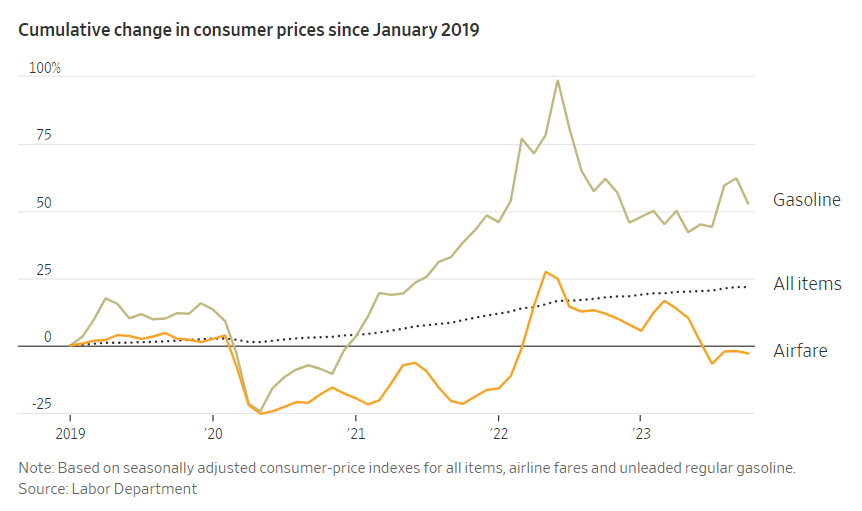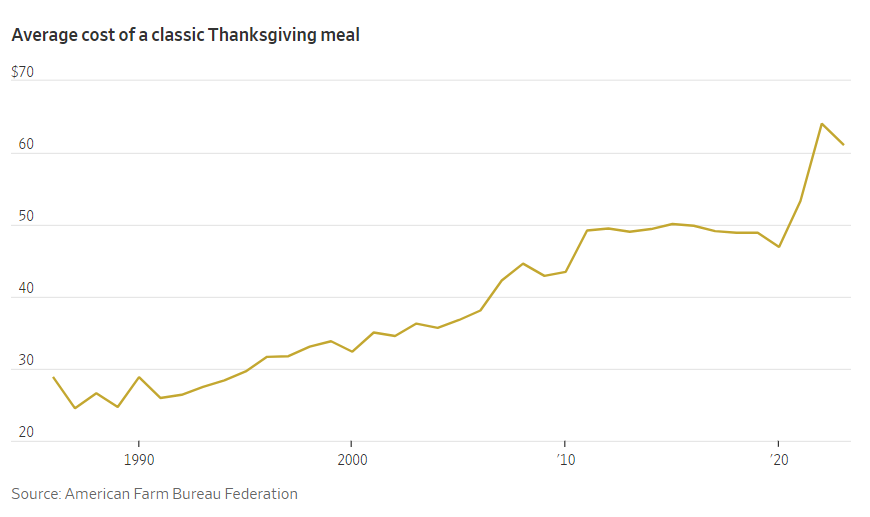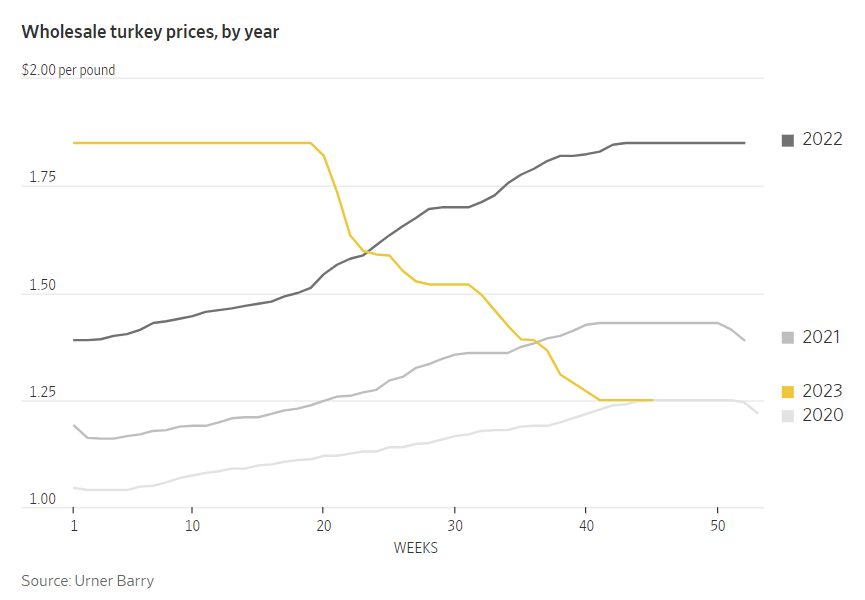
By Patrick Thomas
Nov. 16, 2023
There is no avoiding relatives this year. Thanksgiving gatherings are expected to look a lot more like they did prepandemic, as prices for turkey and travel moderate.

Inflation is easing overall. American families are expected to gather in pre-Covid-size crowds of nine people on average, according to turkey seller Butterball—as big as or bigger than last year’s Thanksgiving.
Consumers also might catch a break on travel. Gas prices are down from this time last year and airfare has been falling overall, though peak periods—such as holidays—might still cost you.

Food prices aren’t rising at the same rapid clip as last year. Consumers are estimated to spend about 2% more on Thanksgiving dinner this year, compared with a 14% increase last year, according to market research firm Circana. Turkey and eggs are much cheaper than a year ago, while some baking ingredients, such as sugar, are a bit pricier.
Many of the factors that sent food inflation soaring since 2022 have abated. Commodity prices for staples such as wheat, corn and some cooking oils that soared after Russia’s invasion of Ukraine at the start of 2022 have declined.
Avian influenza infections, which decimated U.S. poultry flocks in 2022 and early 2023, slowed earlier this year, sending egg and turkey prices down closer to historical averages. While the virus has re-emerged and killed millions more birds since the start of October, it hasn’t yet affected prices enough to show up at the supermarket.

The American Farm Bureau Federation estimates that the typical Thanksgiving feast for 10 will come in at $61.17, a 4.5% decline from last year’s record-high price tag. That is still 25% higher than in 2019, the Farm Bureau said.
Among the side dishes surveyed by the agricultural trade group this year, a can of pumpkin-pie mix and dinner rolls increased the most—3.7% and 3%, respectively. Since dinner rolls are often prepared in-store, the Farm Bureau said, they could show the effect of rising supermarket wages.
The main comfort for families this year will be turkey prices, which soared last year because of the deadly bird flu outbreak that has led to the death of more than 62 million birds, according to the Agriculture Department.

Wholesale prices, or what retailers pay turkey suppliers, for a typical 16-pound bird are down 32% for the first week of November compared with last year, according to the research firm Urner Barry. The average retail price for a 16-pound turkey is $27.35, down 5.6% from last year, according to the Farm Bureau.
Even though wholesale prices have plunged, consumers might not see drastic discounts. Grocery stores lock in their purchases with processors early in the year, and many paid higher prices after the bird flu had hit flocks in states such as Minnesota. Still, plenty of promotional deals can be expected at stores this year, according to industry officials.
“The industry did rebound pretty quickly,” said Jay Jandrain, the chief executive of Butterball, the largest U.S. turkey processor by volume. He said he expects more families will look for heavier birds this year in anticipation of larger gatherings.
Some Americans’ tables will instead feature hams and smaller, 24-ounce chickens, called Cornish game hens, for the holidays, said Thomas Wenrich, senior director of culinary at Tyson Foods. Thanksgiving outpaces Easter for Tyson Foods’ best ham-selling season of the year, and Cornish game hen sales more than double, he said.
Retail prices for ham and whole chickens have remained relatively stable since last year. Watch out in the beef case, though: Sirloin steaks were up 11% in October compared with a year ago, as beef prices soar.
Write to Patrick Thomas at patrick.thomas@wsj.com
Dow Jones & Company, Inc.



